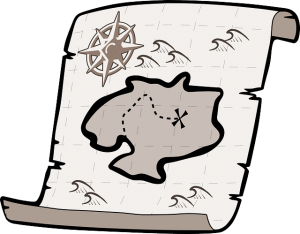Using Archimate for Business Motivation Model and MSP – Part 1
I spend a lot of time around programmes that are managed with Managing Successful Programmes. I’m either in a separate architecture function, advising on changes, or sometimes in the trenches of the programmes themselves.
There’s often a disconnect between the tools and the techniques being used, especially when different team members are coming from different backgrounds with different experiences.
Business Motivation
I’m always concerned about the why. Why does a programme exist? Why is it doing what it’s doing in the way that it’s doing it? Often that boils down to asking what problems are we trying to solve, but sometimes it’s more complex than that.
I’ve been a fan of the Business Motivation Model (BMM) for a few years and have used it successfully with clients, especially to highlight the gaps between expected benefits and portfolio/programme activities.
So I’ve been looking at a more concrete intersection of MSP and BMM and I’ve chosen Archi (based on the Archimate language) to record and display that intersection.
The Business Motivation Model is managed by the Object Management Group (OMG). It’s designed to enable us to articulate the motivation behind business decisions and the impact that those motives have on the organisation.
In common with most of the standards managed by OMG, it’s evolving on a regular basis with the current version at 1.3.
Managing Successful Programmes (MSP)
MSP originated from UK central government under the OGC, the same group that brought you Prince2. It’s now managed by Axelos who also provide more management frameworks, such as MoV, MoP and MoR (Value, Portfolio and Risk respectively).
It’s a well-respected framework and well-adopted within many larger organisations in the UK. However, like a number of standards and frameworks, there can be some confusion as to what is required at each stage. For instance, try discussing with fellow programme managers the level of benefits definition required at the brief and vision stage, or whether the vision forms part of the brief, etc. I’m going to keep clear of those discussions as much as I can within this article, so that may mean that I simplify some of the cases.
MSP has a clear route of expected documents in the early stages of a programme:
- Programme Mandate
- Programme Brief
- Programme Vision
- Programme Blueprint
In parallel, I would expect to see benefits being managed accordingly. With those documents listed above, the task is about defining the benefits that are to be expected and a rough idea of how they will be achieved.
Archimate
Archimate is an open-source modelling standard with Archi being an open-source software for working with that standard. Archimate the standard is managed by the Open Group and is designed not to be a replacement but, instead to work with your existing standards.
The aim
I wanted to use Archi, Archimate, Business Motivation Model and MSP and see how they fitted together. I had a larger aim of wondering if a combined model would assist me in explaining to my clients why uncovering the business motivation matters and that it’s so easy to lose track when you’re in the midst of large organisation-wide programme changes.
Part 2 to follow soon




Comments are closed.